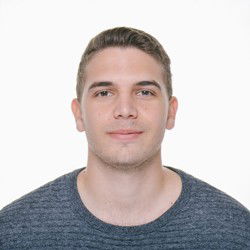Practical Experience in Cell Production
05. January 2021

My three-year study programme as a commercial apprentice at KELLER gives me the opportunity not just to work in the departments that occupy most of my time (Job Preparation, Purchasing, Sales, Accounting), but also – mostly in my second year – to get a glimpse at the goings-on in the various production departments.
In this blog post, you can read all about my experiences in the Cell Production department, where I spent three days immersed in their work and procedures.
Day 1:
After a quick briefing, I started my day in the wafer section. The wafers are drilled with a machine. The small holes require constant checking to ensure, for instance, that they are the correct depth. This is quite intricate work. The wafers are also cleaned regularly to prevent lint from accumulating on the surface. Once everything is prepared, the wafers are cut in two machines: one for silicon and one for glass.
In the afternoon, we tested the leak-tightness of the sensors. This involves blowing helium onto the diaphragm. If there are any leaks, this is shown on the display of a machine. I even got to help out and test a few sensors myself.
Day 2:
On day two, I was put to work on TAB soldering, which is done using a tape machine that solders the chip to the sensor. However, the machine is not fully automatic. The operator has to position each chip correctly using a simple joystick. Although I was hesitant to begin with, I soon warmed up to the task and got on well.
But things got trickier in the afternoon, when I was tasked with joining the chip to the glass feedthrough by hand using tweezers. To do this, I had to apply a small amount of glue to the glass feedthrough then carefully place the chip on top. Compared to operating a machine, this required a steadier hand and more patience. Nonetheless, the time seemed to fly by. I found that the work got easier when I relaxed into it a bit.
Day 3:
On my third and final day, my task was to bond the ceramic element to the chip and the glass feedthrough. This was another delicate job: I had to avoid touching or moving the chip that had already been put in position. Once this was complete, I had the opportunity to learn more about the chips and their special characteristics.
In the afternoon I moved on to the final section – welding and filling with oil. Once again, I was allowed to have a go myself after some quick coaching. I used a machine to weld the sensors into the diaphragm bodies. After a quick reminder on how to use the equipment safely so as to avoid injuring myself, everything went off without a hitch.
My verdict: The three-day stint was enjoyable and made a big impression on me. My colleagues were all very friendly and willing to help. I had some interesting conversations with people in the department. I also learned more about our products and how things work at the company. Overall, it was a great and highly informative experience for my professional life.



